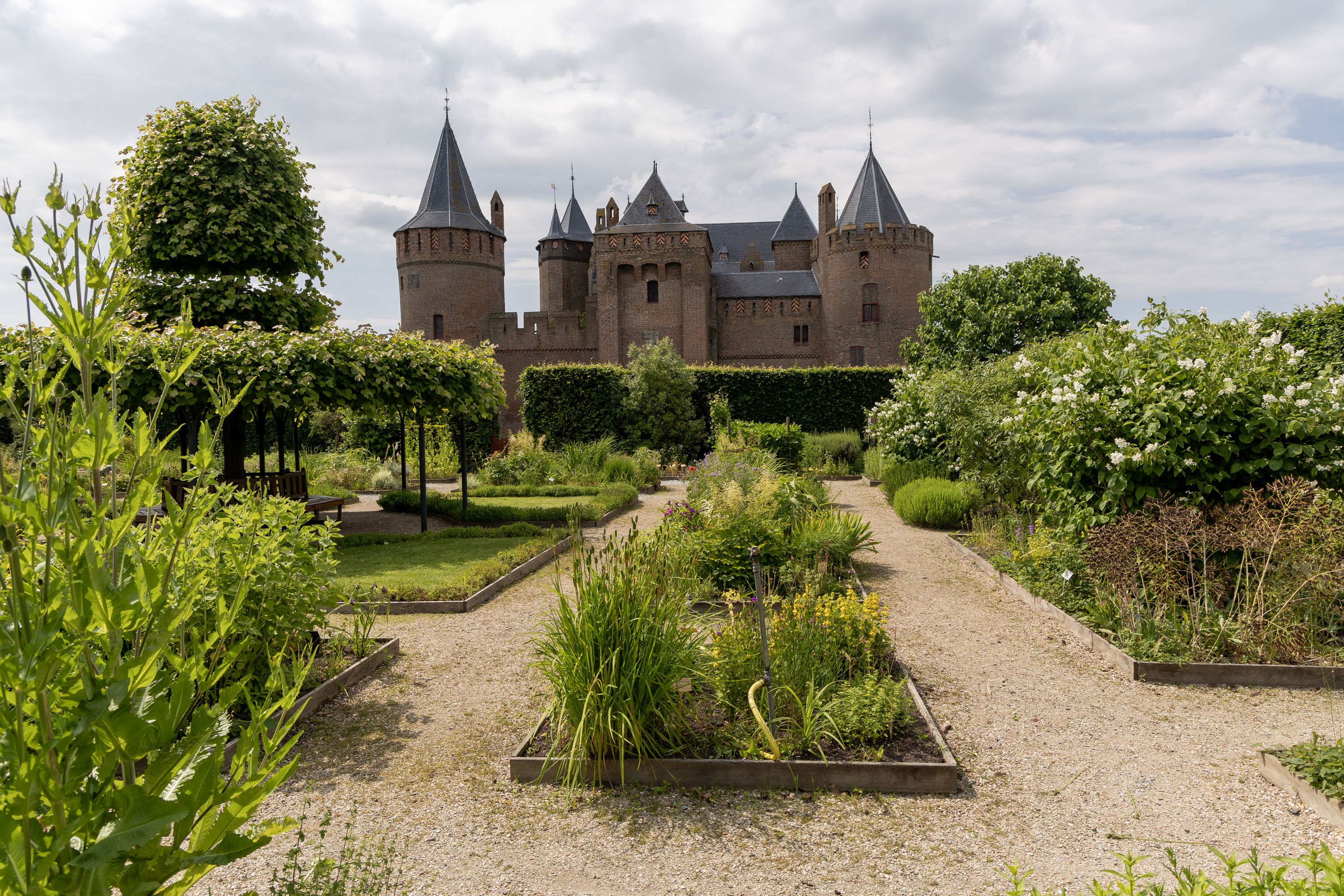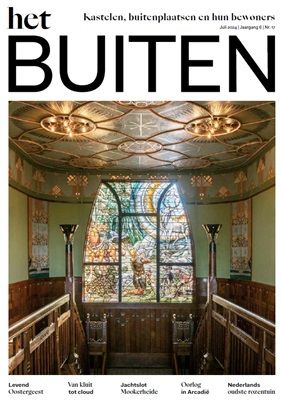From Root Ball to Cloud


Preserving Muiderslot’s Historic Gardens in the Digital Age
This article, authored by Manuela Hoepman with photographs by Albert Speelman, was originally published in the July 2024 issue of the Dutch magazine 'Het Buiten'. The English translation was provided by the Hortis team. For more details about the magazine, see below.
The Green Collection of the Muiderslot
For heritage managers, making an inventory and keeping records of their collection of movable property, such as furniture, paintings, and utilitarian artifacts, is very common. Such overviews can, for example, be valuable when caring for their collection and lending items out to exhibitions. This is also the case at Muiderslot, where garden director Henk Boers and his garden volunteers have long cherished the desire to map the 'living heritage'.
What makes the Muiderslot gardens unique is that for more than four hundred years, there have been utility gardens on the site of the former outer bailey. They are planted with mostly forgotten and endangered historic utility and ornamental plants. The design and plantings of these gardens are based on the gardens that Pieter Corneliszoon Hooft, the most famous resident of the Muiderslot, had constructed in the first half of the seventeenth century. Divided in two by a berceau (deciduous corridor) of beech trees, the 'Kruydhof' (herb garden), seen from the castle, is on the left. The vegetation in the Kruydhof is divided into four groups: medicinal plants (home pharmacy), culinary herbs, dye plants, and ornamental plants. Examples are milk thistle, black chervil, rosemary, crimsonberry, and dragon root.
On the right side of the berceau is the 'Warmoeshof (chard garden): the vegetable garden, planted with often forgotten vegetables, such as good-king-henry, sea kale, Jerusalem artichoke, chard, and thousand head kale or old wive’s cabbage. This kind of vegetable garden was necessary in the seventeenth century to be self-sufficient. At the rear of the Muiderslot lies the plum orchard. Hooft liked to invite his friends to the Muiderslot when the plums were ripe. This enabled him to close his letters with the well-known Dutch greeting 'See you in plum season'. At the end of the last century, the plum orchard was replanted and now contains various historical plum varieties, such as the Betuwse Kwets and Mirabelle de Nancy.
Towards Digitization
The starting point for documenting the unique plant collection was the card index that Henk Boers used in designing the gardens. The garden volunteers then got to work checking and recording the collection on a monthly basis. One of these volunteers, Roel Pleizier, has digital and administrative experience. He was willing to record the plant collection digitally. Thus, the collection management team started with the 'From root ball to cloud’ project. After pioneering with an Excel spreadsheet and a database in Access, they came across the botanical database IrisBG. Piggybacking on the knowledge of Arboretum Belmonte in Wageningen, they gained experience with documenting the plant collection. Roel explains what they encountered: 'The disadvantage was that recording information in the system could only be done on a desktop computer. As a result, we first had to collate the information in the gardens manually and then later enter it into the database elsewhere, cumbersome and not very practical’.

A Line With London
In 2022, the team was introduced to a new botanical software package called Hortis. This system now functions as a memory for the preservation of the green collection and as a knowledge base for future generations. Roel mentions that they are still pioneers: 'The Muiderslot is now the only garden in the Netherlands working with this software, but the advantage of this is that we can set up the database ourselves. This way, we immediately contribute to the development of Hortis! Although 2023 still counted as a trial year, the team is very enthusiastic about their experiences. Ninety percent of the collection is now recorded in Hortis, which uses Plants of the World Online, published by the Royal Botanic Gardens, Kew in London, as its taxonomic reference. Kew is an international leader in botanical research and education and has been classified as a UNESCO World Heritage Site since 2003. Kew Gardens' collections include more than 27,000 living plants, 8.3 million specimens of plants and fungi, and 40,000 species in its seed bank. This access allows Muiderslot to record the correct Latin name of each plant. In addition, one can mark the location of a plant so that visitors and interested parties can look up these details on a mobile map.

And The Visitors To The Muiderslot?
Now that the collection of plants has largely been recorded in Hortis, we are ready for the next step. To inform visitors, the individual plants in the gardens are provided with stylish signs containing the most important facts. Moreover, with the help of data from Hortis, new stories about the application of edible, inedible, and even highly poisonous plants can be written. In this way the guides and the garden volunteers can increase information for visitors. Roel: 'You can tell wonderful historical stories about a garden full of 'seventeenth-century plants’. Visitors can also use their smartphone to look at the database as they walk through the garden.' For online visitors, these stories and Hortis are made accessible on the Muiderslot website.
We are excited to share our collection with the public and you can have an early peek to see what it might look like here: https://muiderslot.hortis.com/public/site/tuin/map

Establishing Green Collections
Muiderslot has also started the project Art of Connecting. This means that the indoor collection (recorded in the Axiell system) is connected with the outdoor collection in Hortis. 'The non-living heritage is thus linked to its 'living' heritage’. This makes it easier to explain the relationship between the museum inside and outside to the visitors', says Roel. He recommends all castles, country- and other estates record their green heritage collections in the same way.
'The very best thing would be if we could cooperate with more castles, country- and other estates in the future to preserve these important outdoor collections.'



About Het Buiten
Het Buiten is a public magazine that reports passionately and knowledgeably about the world of castles, country- and other estates. The magazine contains current reports on the conservation and management of outdoor areas, personal and historical stories, and a platform for discussion and debate.
For more information, visit: https://het-buiten.nl/
